Top Trekking Destinations In 2024, adventure enthusiasts and nature lovers will find themselves drawn to the world’s top trekking destinations, promising unforgettable summit experiences. From the iconic heights of Mount Everest to the cultural richness of the Inca Trail, these routes offer an opportunity to witness breathtaking landscapes and immerse oneself in diverse cultures. Scaling Mount Everest, Earth’s highest peak, remains a dream for many, while the Inca Trail in Peru offers a historical and archaeological journey to Machu Picchu. The rugged beauty of Kilimanjaro, Africa’s rooftop, awaits those eager to challenge themselves. For a taste of the Arctic, there’s Mount Logan in Canada and Greenland’s vast icecap. Japan’s iconic Mount Fuji promises cultural significance and stunning vistas. Morocco’s Toubkal offers a unique blend of challenges and North African charm. In 2024, these top trekking destinations beckon with adventure, culture, and natural wonders, making it an ideal year for summit aspirations.
Read Also: Top 10 Treks in Nepal
1- Kilimanjaro: African Crown to Summit in 2024
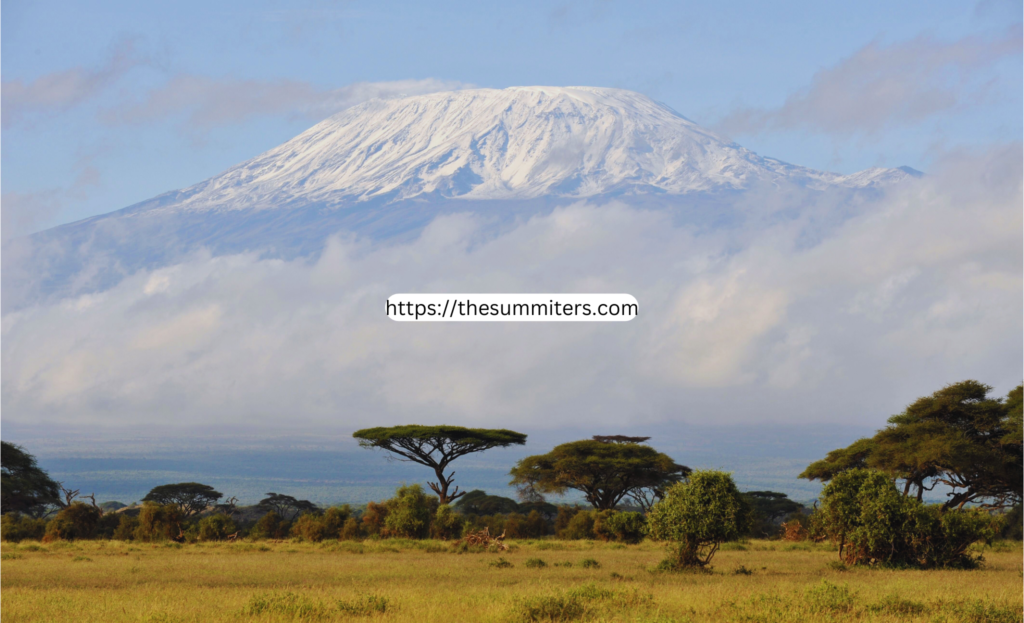
Imagine a massive natural wonder Mount Kilimanjaro nestled in Tanzania, pleasing adventurers from around the world. This awe inspiring composite volcano proudly stands as the tallest sovereign mountain on our planet, soaring to an astonishing 5,895 meters (19,341 feet) above sea level. Yet, Kilimanjaro’s allure extends beyond its sheer height; it captivates with its remarkable ecological diversity and the opportunity it offers to reach the “Roof of Africa.”
Trekking & Routes
Trekking Kilimanjaro is an unparalleled adventure that promises an array of extraordinary experiences as you journey through a tapestry of ecosystems and varying climates. Here are some captivating routes trekkers can choose from
- Machame Route (The Whiskey Route):
This challenging path is celebrated for its dramatic landscapes, from lush rainforests to stark alpine deserts, culminating with the formidable Barranco Wall. Expect to dedicate approximately 6 to 7 days to conquer it.
- Marangu Route (The Coca-Cola Route):
Among the most favored routes, Marangu offers a more comfortable journey with hut accommodations along the way. Trekkers often complete it in 5 to 6 days.
- Lemosho Route:
Known for its pristine wilderness and breathtaking vistas, Lemosho presents a longer and less crowded adventure across diverse terrain, typically spanning 7 to 8 days.
- Rongai Route:
Commencing from the mountain’s north side, Rongai offers a unique perspective and serene trails. This route usually entails a 6 to 7-day trek.
Umbwe Route: Recognized as the most demanding route, Umbwe features a steep ascent and limited acclimatization time. It’s advised for seasoned trekkers and usually spans 5 to 6 days.
Difficulties and Challenges
Undertaking the Kilimanjaro trek involves confronting several challenges that necessitate thorough preparation:
- Altitude:
As you ascend, oxygen levels decrease, elevating the risk of altitude sickness. Adequate acclimatization, hydration, and vigilant monitoring of altitude-related symptoms are vital.
- Weather:
Kilimanjaro’s weather can be volatile, uncertain from burning sun in lower elevations to freezing temperatures at higher altitudes. Equipping yourself with high quality gear including warm clothing and sub zero rated sleeping bags is essential.
- Physical Fitness:
While technical climbing skills are not requisite, Kilimanjaro demands robust physical fitness. Training for endurance is crucial, given the extended periods of walking and steep ascents.
- Mental Resilience:
The trek can be mentally taxing, particularly during the final ascent to the summit when fatigue and high altitudes can impede progress. Mental preparedness and unwavering determination are indispensable.
Cost to Summit
The cost of embarking on a Kilimanjaro summit adventure can fluctuate widely, contingent on several factors:
- Route Selection:
Each route boasts its unique price point, influenced by its duration and amenities. The Marangu route is often the most economical, while the Lemosho and Umbwe routes tend to be pricier due to their extended durations and fewer fellow trekkers.
- Tour Operator:
Your choice of tour operator significantly impacts the cost. Operators offer varying levels of service, experience, and equipment quality. High-quality operators may charge more but provide a safer and more enjoyable journey.
- Group Size:
Joining a group expedition is often a more budget-friendly option compared to a private trek. Sharing expenses for permits, guides, and equipment can considerably reduce the overall cost.
- Trek Duration:
The duration of your trek can influence expenses. Longer treks, allowing for superior acclimatization and a greater chance of reaching the summit, tend to be costlier.
- Additional Expenses:
Take into account supplementary costs, including flights to Tanzania, visa fees, travel insurance, gear rentals or purchases, gratuities for guides and porters, and optional extras like extra acclimatization days.
Average Cost to Summit:
On average a Kilimanjaro trek can range from $2000 to $6000 per person dependent on the factors mentioned above. Opting for a budget operator and a group trek on a shorter route may bring you closer to the lower end of this spectrum, while a private trek with a high-quality operator on an extended route may place you at the higher end. Thoughtful research and meticulous budgeting are vital to ensuring a safe and fulfilling journey.
Summiting Kilimanjaro is unquestionably an investment, both financially and in terms of physical preparation. Nevertheless, the unparalleled reward of standing at Uhuru Peak, Kilimanjaro’s highest point, and beholding its breathtaking vistas while basking in a profound sense of accomplishment make this adventure truly priceless. To embark on this iconic journey, meticulous planning, the selection of a reputable tour operator, and comprehensive preparation are indispensable.
2- Carstensz Pyramid: A Thrilling Adventure in Oceania
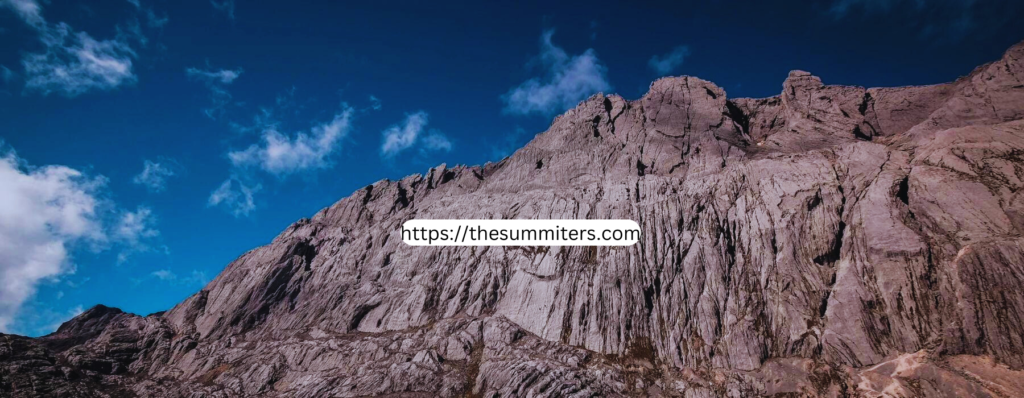
Carstensz Pyramid, also known as Puncak Jaya, stands as a remarkable mountain nestled in the remote wilderness of Indonesia’s Papua Province. Towering at a staggering 4,884 meters (16,024 feet) above sea level, it holds the prestigious title of being the highest point in Oceania. This captivating peak lures adventurers with its exceptional challenges and awe-inspiring natural beauty. Scaling Carstensz Pyramid is a daring journey, demanding not just technical expertise but also a deep appreciation for the untamed beauty of this isolated region.
Trekking & Routes
Trekking Carstensz Pyramid presents a thrilling adventure with several noteworthy routes:
- Carstensz Glacier Route:
This is the most commonly taken path, involving traversing glaciers, steep rock walls, and icy terrain. Climbers frequently employ rock climbing techniques and don cold-weather gear to conquer the summit.
- Mazeno Ridge Route:
Offering a more technical and less frequented alternative, the Mazeno Ridge presents challenging ascents with breathtaking panoramic vistas. Climbers must tackle exposed ridges and demanding rock faces.
- East Ridge Route:
A less explored option, the East Ridge provides a technically challenging ascent, complete with sections that require advanced rock climbing skills.
Difficulties and Challenges
Climbing Carstensz Pyramid is a formidable task that comes with its unique set of challenges:
- Technical Mastery:
Scaling this peak demands advanced rock and ice climbing skills, along with proficiency in handling technical gear and equipment.
- Variable Weather:
The region experiences unpredictable weather patterns, including frequent rain and snowfall. Climbers must be prepared for sudden shifts in conditions, including extreme cold temperatures.
- Altitude Considerations:
While not as towering as some other peaks, Carstensz Pyramid still carries altitude-related risks. Adequate acclimatization is essential to mitigate the potential onset of altitude sickness.
- Logistical Complexities:
Planning an expedition to Carstensz Pyramid involves navigating a complex web of logistics, from securing permits and arranging transportation to Papua Province to coordinating with local guides and porters. Respecting the cultural sensitivities of the indigenous communities in the area is also vital.
Cost to Summit
Embarking on a journey to summit Carstensz Pyramid involves various financial considerations
- Permit Fees:
Procuring permits can be a substantial expense, as they are subject to government regulations and fees. Cost can fluctuate based on the selected route and the number of climbers.
- Travel Expenses:
Travel related costs including international and domestic flights accommodation and transportation to the base camp, can significantly impact the overall budget.
- Equipment:
Climbers must invest in specialized gear such as rock climbing equipment, ropes, harnesses, and cold-weather clothing to ensure their safety and success.
- Guides and Support Team:
Engaging experienced guides and support personnel, including porters and cooks, is often a necessity. These professionals contribute to both the safety and enjoyment of the expedition but add to the overall cost.
Average Cost
On average, undertaking a Carstensz Pyramid expedition can range from $10,000 to $20,000 or even more per person. The exact expenses can fluctuate based on several factors, including the chosen route, expedition type (guided or independent), the number of participants, and the extent of logistical support required. Adequate financial planning and thorough preparation are indispensable to ensure a triumphant and secure ascent of this challenging peak.
Scaling Carstensz Pyramid is an accomplishment of unparalleled significance, offering climbers a remarkable fusion of technical trials and the opportunity to immerse themselves in one of the world’s most remote and unspoiled regions. Despite the considerable financial investment and logistical intricacies, the rewards encompass a profound sense of achievement and the privilege of witnessing breathtaking natural wonders in an untamed wilderness.
3- Vinson Massif: Mastering Antarctica’s Highest Summit
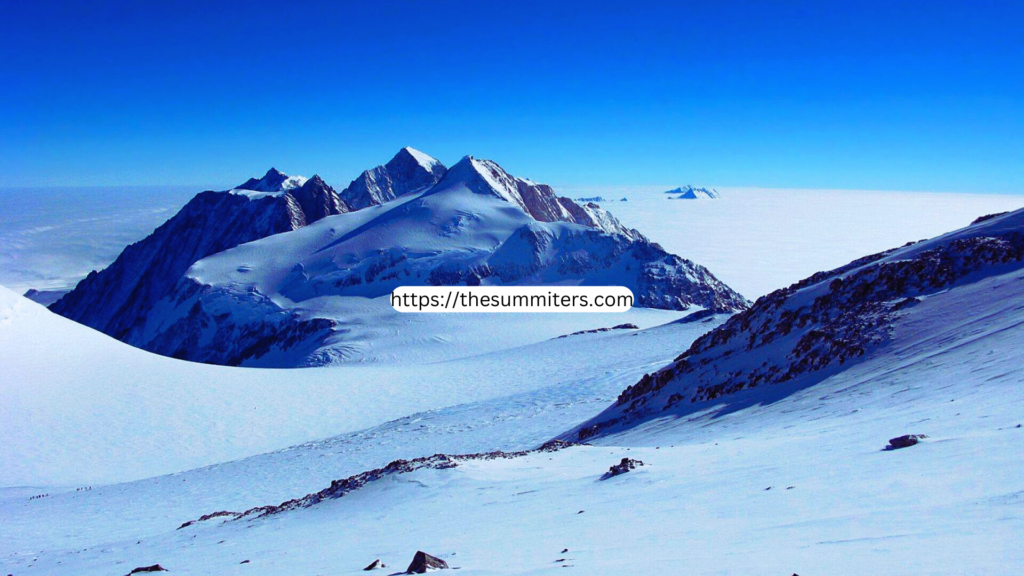
Vinson Massif, Antarctica’s crowning glory, embodies the spirit of human exploration and adventure. This imposing mountain, soaring majestically to a towering height of 4,892 meters (16,050 feet) above sea level, stands as the ultimate challenge for climbers aiming to conquer the loftiest peak on Earth’s southernmost continent. Conquering Vinson Massif is a remarkable achievement, demanding not just technical prowess but also the boldness to embrace the austere beauty of the frozen wilderness.
Trekking & Routes
Embarking on a journey to Vinson Massif promises a unique and exhilarating experience through several primary routes
- Normal Route:
This route is the most frequently traversed, guiding climbers across glaciers and snowfields. Although it may be less technically demanding than other options, it still necessitates skills in crevasse rescue and the art of surviving in frigid conditions.
- West Face Route:
For those seeking a greater challenge, the West Face Route offers steeper slopes and a blend of ice and rock sections. Climbers on this route must be proficient in advanced mountaineering techniques.
- Remote and Technical Routes:
The most daring adventurers can explore remote and highly technical routes, providing a distinctive and demanding climbing experience. These routes demand exceptional expertise in ice and rock climbing.
Difficulties and Challenges
Scaling Vinson Massif presents an array of exceptional challenges:
- Biting Cold:
Antarctica ranks among the coldest and windiest places on our planet. Climbers must brace themselves for extreme cold, with temperatures plummeting well below freezing, even during the summer months.
- Logistical Complexity:
Organizing an expedition to Vinson Massif is a formidable logistical undertaking. It entails securing permits, planning transportation to Antarctica, coordinating with support staff, and navigating the formidable challenges posed by extreme weather and isolation.
- Physical Stamina:
Climbing at high altitudes, even on routes considered less technically demanding, is a physically demanding endeavor. Maintaining peak physical fitness and proper acclimatization is vital to combat altitude sickness and exhaustion.
- Isolation:
Antarctica stands as one of the most remote and isolated regions on Earth. Climbers must prepare themselves for the psychological difficulties of isolation and internment in this extreme environment.
Cost to Summit
Embarking on a quest to summit Vinson Massif entails several financial considerations:
- Permit Fees:
Securing permits for Antarctica can be a substantial expense, governed by government regulations and fees that vary depending on the type of expedition and the number of climbers.
- Travel Expenses:
The cost of travel includes international flights, accommodations in Punta Arenas (the gateway to Antarctica), and the expense of the flight to Antarctica itself.
- Equipment:
Climbers must invest in specialized gear, encompassing cold-weather clothing, mountaineering equipment, and gear suitable for harsh conditions.
- Expedition Support:
Many climbers opt for guided expeditions, which provide the services of experienced guides, cooks, and support staff. These services enhance safety and comfort but contribute to the overall cost.
Average Cost
On average, an expedition to Vinson Massif may range from $35,000 to $50,000 or even higher per person. The exact cost hinges on factors such as the chosen route, the level of logistical support required, the number of climbers in the expedition, and the decision to embark on a guided or independent climb. Prudent financial planning and meticulous preparation are paramount to ensuring a successful and secure ascent of this extraordinary peak.
Conquering Vinson Massif marks an achievement of unparalleled significance, offering climbers an extraordinary fusion of technical trials and the opportunity to immerse themselves in one of the most remote and unspoiled environments on our planet. Despite the formidable financial investment and logistical intricacies, the rewards include a profound sense of accomplishment and the privilege of beholding the breathtaking beauty of Antarctica’s frozen wilderness.
4- Pico de Orizaba: Conquering Mexico’s Tallest Peak
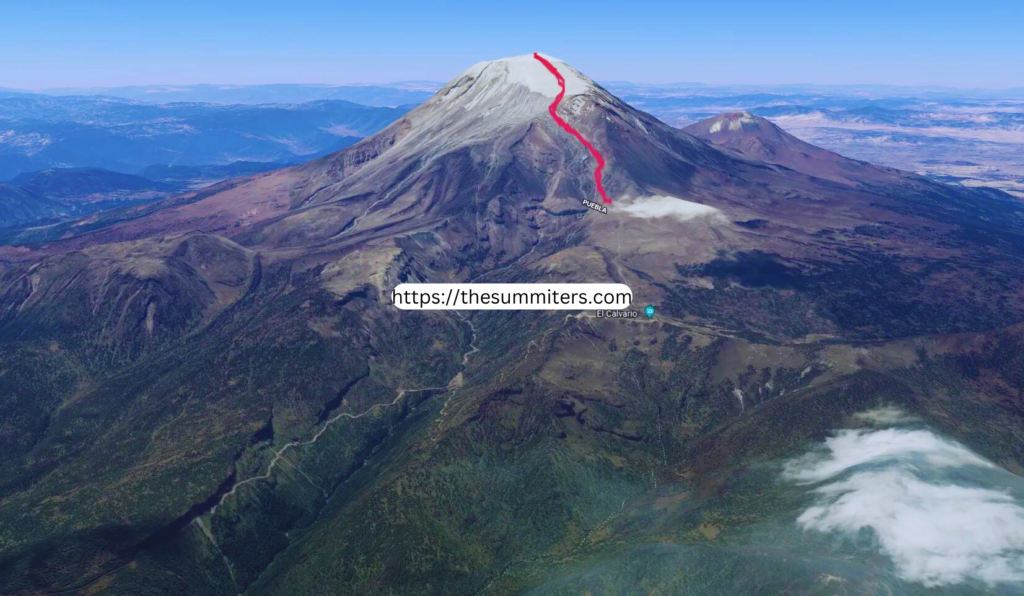
Pico de Orizaba, affectionately known as Citlaltépetl, stands as an emblem of adventure and exploration within Mexico. This majestic volcano reaches a towering height of 5636 meters (18491 feet) above sea level holding the title of Mexico’s highest peak and the third highest in North America. Conquering Pico de Orizaba is an extraordinary undertaking demanding not just technical expertise but also a deep appreciation for the untamed beauty of this rugged mountain.
Trekking & Routes
Embarking on a journey to summit Pico de Orizaba promises a diverse and captivating experience, featuring several notable routes:
- Jamapa Glacier Route:
This is the most commonly chosen path, guiding climbers across the Jamapa Glacier and snowfields. While considered less technically demanding, trekkers must still navigate crevasses and challenging terrain.
- Glaciar Sur Route:
The Glaciar Sur (South Glacier) Route presents a more demanding and steeper alternative, incorporating challenging ice and rock sections. Climbers on this route need advanced mountaineering skills.
- Arista del Sol Route:
For those seeking a greater technical challenge, the Arista del Sol (Ridge of the Sun) Route offers a thrilling ascent with exposed ridges and rock faces, demanding exceptional expertise in rock climbing.
Difficulties and Challenges
Ascending Pico de Orizaba presents an array of formidable challenges:
- Altitude Concerns:
Despite not being among the world’s highest peaks, Pico de Orizaba’s altitude can still pose risks. Adequate acclimatization is essential to prevent altitude sickness and exhaustion.
- Variable Weather:
The mountain’s weather can be unpredictable, with conditions swiftly shifting from scorching sun to freezing cold. Climbers must be prepared for these sudden weather fluctuations.
- Logistical Complexities:
Organizing an expedition to Pico de Orizaba involves navigating intricate logistics, including securing permits, arranging transportation to the region, coordinating with local guides, and respecting the cultural nuances of the area.
- Physical Endurance:
Climbing at high altitudes demands physical fitness and endurance. Long hours of trekking and steep ascents are part of the challenge.
Cost to Summit
Summiting Pico de Orizaba involves various financial considerations:
- Permit Fees:
Acquiring permits for the ascent comes with associated costs, determined by government regulations and the number of climbers in the expedition.
- Travel Expenses:
Expenses encompass flights to Mexico, accommodations in the region, transportation to the base camp, and the cost of gear and equipment.
- Equipment:
Climbers must invest in specialized gear, including mountaineering equipment, cold-weather clothing, and other essentials.
- Guides and Support Staff:
Many climbers opt for guided expeditions, which provide the services of experienced guides, cooks, and support staff. These services enhance safety and comfort but add to the overall cost.
Average Cost
Average Cost an expedition to Pico de Orizaba may range from $1000 to $5000 or even more per person. The precise cost depends on factors such as the selected route, the expedition type (guided or independent), the number of climbers in the group, and the level of logistical support required. Prudent financial planning and meticulous preparation are essential for a successful and secure ascent of this remarkable peak.
Scaling Pico de Orizaba is an achievement of great significance, offering climbers an extraordinary blend of technical challenges and the opportunity to immerse themselves in the natural beauty of this iconic Mexican mountain. Despite the financial investment and logistical intricacies involved, the rewards include a profound sense of accomplishment and the privilege of witnessing the breathtaking vistas from the summit of Citlaltépetl.
5- Greenland Icecap: Conquering the Arctic’s Majestic Glacier
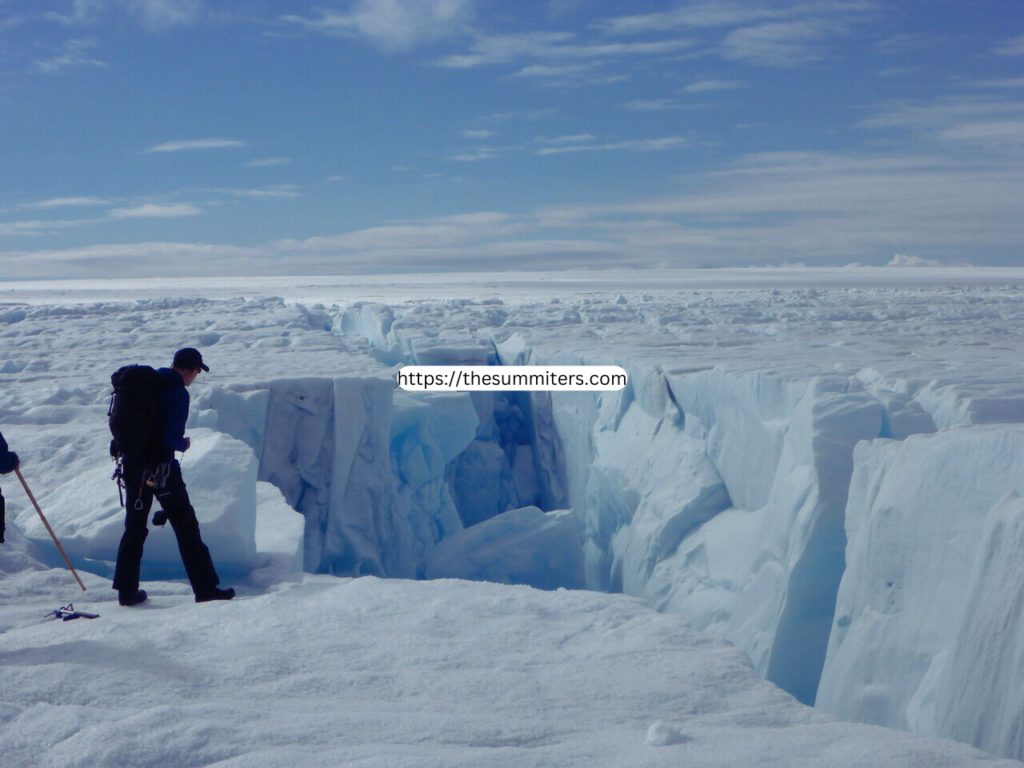
The Greenland Icecap a huge frozen plain wrapping the majority of Greenland, stands as a evidence to the Arctic’s awe inspiring beauty. This huge ice sheet covering over 1.7 million square kilometers (660,000 square miles) ranks as the second largest on Earth, trailing only Antarctica. Venturing across the Greenland Icecap is a remarkable and demanding adventure, demanding not just physical prowess but also an unwavering appreciation for the breathtaking and stark grandeur of this frozen world.
Trekking & Routes
Traversing the Greenland Icecap offers an exceptional and challenging journey, with several potential routes:
- West to East Traverse:
This ambitious route entails crossing the icecap from its western boundary to the eastern coast, covering vast expanses of ice and snow. It’s a challenging and time-consuming expedition.
- North to South Traverse:
Another arduous choice, this route leads trekkers from the northern shoreline to the southern coast of Greenland, offering a chance to experience the diverse landscapes of the icecap.
- Exploration Routes:
For those seeking shorter adventures, various exploration routes allow for in-depth exploration of specific regions of the icecap, each offering unique experiences.
Difficulties and Challenges
Trekking across the Greenland Icecap presents a multitude of unique challenges:
- Harsh Arctic Conditions:
The Arctic’s extreme cold and unpredictable weather can pose serious risks. Trekkers must be prepared for swiftly changing conditions and frigid temperatures, even during the summer months.
- Navigational Skills:
The featureless expanse of the icecap makes navigation a formidable task. Proficiency in GPS and map-reading is crucial for safe passage.
- Isolation:
The remote character of the icecap means trekkers will be far removed from civilization. This isolation can be mentally taxing and calls for a resilient mindset.
- Logistical Complexities:
Organizing an expedition to the Greenland Icecap necessitates meticulous planning, including securing permits, arranging transportation to Greenland, and coordinating with local support teams.
Cost to Summit
Trekking across the Greenland Icecap involves various financial considerations:
- Permit Fees:
Travelers must secure permits for the expedition, with costs contingent on government regulations and the chosen route’s duration.
- Travel Expenses:
Expenses encompass international flights to Greenland, accommodations in Greenlandic towns, transportation to and from the icecap, and the acquisition of necessary equipment.
Trekkers need specialized gear tailored for Arctic conditions, including cold-weather clothing, camping equipment, and navigational tools.
- Equipment:
Support Services: Many expeditions opt for experienced guides, cooks, and support staff to enhance safety and comfort, though this adds to the overall cost.
Average Cost
An average start on a trek across the Greenland Icecap can range from $5000 to $10000 or more per person. The precise cost depends on factors such as the selected route, the level of logistical support required, the expedition’s duration, and whether it is guided or independent trekking. Meticulous financial planning and comprehensive preparation are imperative for a successful and secure journey through this awe-inspiring Arctic landscape.
Trekking across the Greenland Icecap stands as an achievement of remarkable significance, offering adventurers a unique blend of challenges and the opportunity to immerse themselves in one of the most pristine and remote environments on Earth. Despite the financial investment and logistical complexities involved, the rewards include a profound sense of accomplishment and the privilege of witnessing the unparalleled beauty of the Arctic wilderness.
6- Mount Logan: Canada’s Tallest Peak Awaits Your Conquest
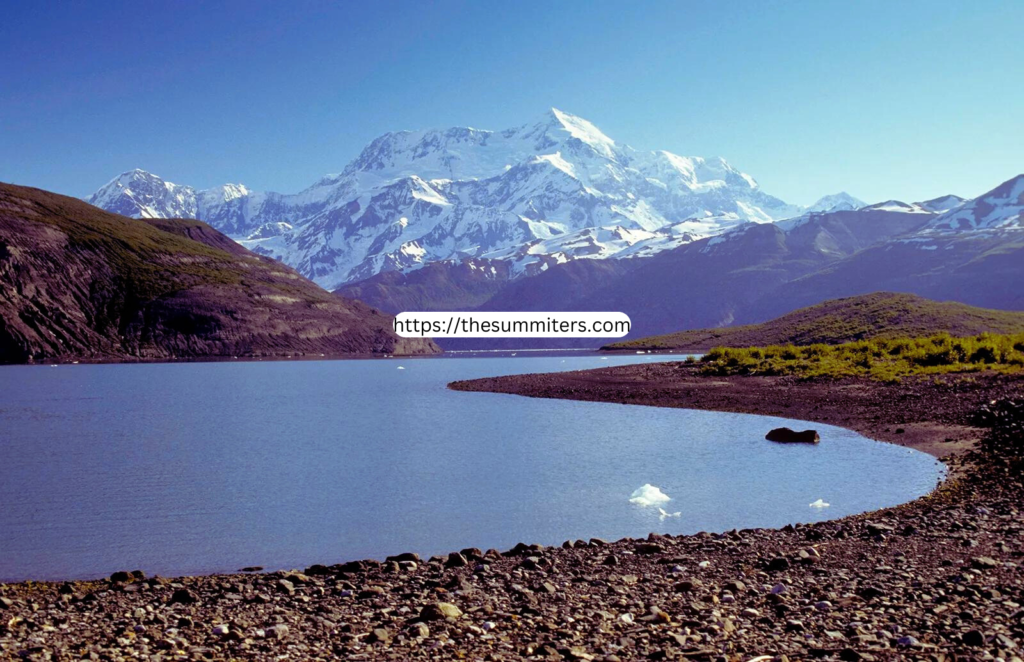
Located in Canada’s Yukon Territory Mount Logan is a breathtaking adventure and a testament to natural beauty. As Canada’s highest peak and North America’s second highest it rises proudly to a height 5,959 meters (19,551 feet) above sea level. For those daring souls thirst to scale its terrifying heights, Mount Logan offers an extraordinary challenge. It calls not only for technical expertise but also a profound appreciation of the rugged grandeur that defines this remote wilderness.
Trekking & Routes
Embarking on a journey up Mount Logan promises a distinctive and demanding expedition with several notable routes to explore:
- King Trench Route:
This is the favored route and relatively less technical. It guides climbers up the King Trench, a direct path to the summit. While it demands ice and glacier navigation skills, it’s considered more accessible than other routes.
- East Ridge Route:
For those seeking technical challenges, the East Ridge Route awaits. Climbers must navigate steep ridges and tackle technical rock and ice sections. This route calls for advanced mountaineering skills.
- Hummingbird Ridge Route:
Among the least attempted routes, the Hummingbird Ridge Route takes trekkers on a journey through a complex ridge. Technical climbing and challenging route-finding make it a daunting choice.
Difficulties and Challenges
Conquering Mount Logan is a monumental undertaking, accompanied by an array of extraordinary challenges:
- Extreme Cold:
The harsh subarctic climate in the Yukon means treacherous low temperatures, even during the climbing season. Mount Logan is renowned for its extreme cold and fierce storms.
- Altitude Concerns:
While not as towering as some of the world’s giants, altitude sickness remains a potential risk on Mount Logan. Proper acclimatization is paramount to mitigate this concern.
- Logistical Complexities:
Organizing an expedition to Mount Logan involves securing permits, arranging transportation to this remote location, and coordinating with support teams. The logistics can be intricate and demanding.
Isolation: Mount Logan stands in a remote and sparsely populated region. Climbers must brace themselves for the psychological challenges of isolation and self-sufficiency.
Cost to Summit
Embarking on a Mount Logan expedition entails several financial considerations:
- Permit Fees:
Climbers must obtain permits, with costs varying depending on factors such as the chosen route and the number of climbers in the expedition.
- Travel Expenses:
This includes expenses like flights to the Yukon, accommodations, transportation to the base camp, and any additional logistical arrangements.
- Equipment:
Mountaineers need specialized gear tailored for the extreme cold, including mountaineering equipment, clothing for Arctic conditions, and camping gear.
- Guides and Support Staff:
Many climbers opt for guided expeditions, benefiting from experienced guides, cooks, and support staff. While this enhances safety and comfort, it contributes to the overall cost.
Average Cost
As an average, commence on a Mount Logan expedition can range from $8,000 to $20,000 or more per person. The accurate cost depends on factors such as the chosen route, the level of logistical support required, the expedition’s duration, and whether it’s a guided or independent venture. Meticulous financial planning and comprehensive preparation are essential for a successful and safe ascent of this remarkable peak.
Scaling Mount Logan is an achievement of profound significance, offering climbers a unique blend of technical challenges and the opportunity to immerse themselves in the pristine wilderness of the Yukon. Despite the substantial financial investment and logistical intricacies, the rewards include a profound sense of accomplishment and the privilege of witnessing the breathtaking beauty of Canada’s highest peak.
7- La Malinche -Exploring Mexico’s Iconic Volcano
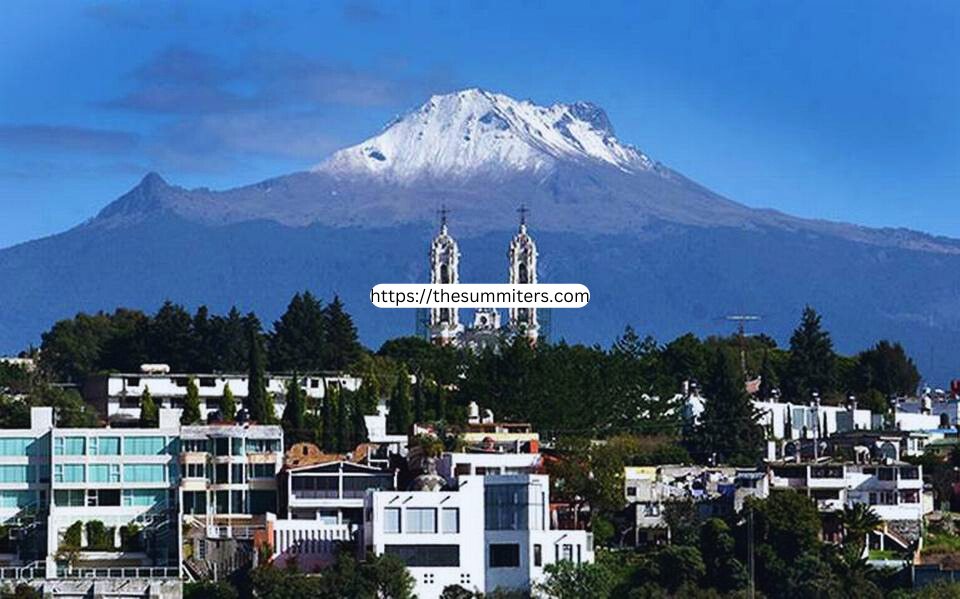
La Malinche, also known as Matlalcueye or Malintzin, is a symbol of adventure deeply woven into Mexico’s heritage. This magnificent volcano gracefully reaches an elevation of 4,461 meters (14,636 feet) above sea level, holding a special place in Mexican history and culture. Conquering La Malinche is an extraordinary accomplishment, demanding not only technical prowess but also a profound appreciation for the natural splendor of this prominent peak.
Trekking and Routes
Trekking La Malinche offers a diverse and captivating experience, with several noteworthy routes to choose from:
- The Standard Route (South Route):
This is the most commonly chosen path, guiding climbers through the volcano’s southern slopes. It provides a direct route to the summit and is considered less technically demanding.
- The North Ridge Route:
For those seeking a more technical challenge, the North Ridge Route awaits. Climbers must navigate steep ridges and confront technical rock and ice sections, necessitating advanced mountaineering skills.
- The East Face Route:
The East Face Route is another option, offering a demanding ascent involving technical rock climbing and exposed faces, delivering a thrilling adventure for experienced climbers.
Challenges and Difficulties
Climbing La Malinche presents several challenges:
- Altitude Concerns:
Although not as towering as some peaks, La Malinche’s altitude can still pose risks. Proper acclimatization is essential to prevent altitude sickness and fatigue.
- Variable Weather:
The mountain’s weather can be unpredictable, fluctuating from scorching sun to freezing temperatures. Climbers must be prepared for these weather variations.
- Logistical Complexities:
Organizing an expedition to La Malinche involves securing permits, arranging transportation to the region, coordinating with local support teams, and respecting the cultural sensitivities of the area.
- Physical Endurance:
Climbing at high altitudes demands physical fitness and stamina. Long hours of trekking and steep ascents are part of the challenge.
Cost to Summit
Summiting La Malinche entails various financial considerations:
- Permit Fees:
Climbers need to obtain permits, with costs dependent on factors such as the chosen route and the size of the expedition.
- Travel Expenses:
This includes costs like transportation to the mountain, accommodations, and any additional logistical arrangements.
- Equipment:
Climbers must invest in specialized gear, including mountaineering equipment, suitable clothing for high altitudes, and camping gear.
- Guides and Support Staff:
Many climbers opt for guided expeditions, which provide experienced guides, cooks, and support staff. While this enhances safety and comfort, it contributes to the overall cost.
Average Cost
On average, a La Malinche expedition can range from $500 to $2,000 or more per person. The precise cost depends on factors such as the chosen route, the level of logistical support required, the duration of the expedition, and whether it’s a guided or independent climb. Meticulous financial planning and comprehensive preparation are crucial for a successful and secure ascent of this iconic volcano.
Climbing La Malinche is a noteworthy achievement, encompassing cultural and natural significance, offering climbers a distinctive fusion of technical trials and the opportunity to immerse themselves in Mexico’s awe-inspiring landscape. Despite the financial investment and logistical intricacies, the rewards encompass a profound sense of accomplishment and the privilege of witnessing the breathtaking beauty of La Malinche.
8- South Pole
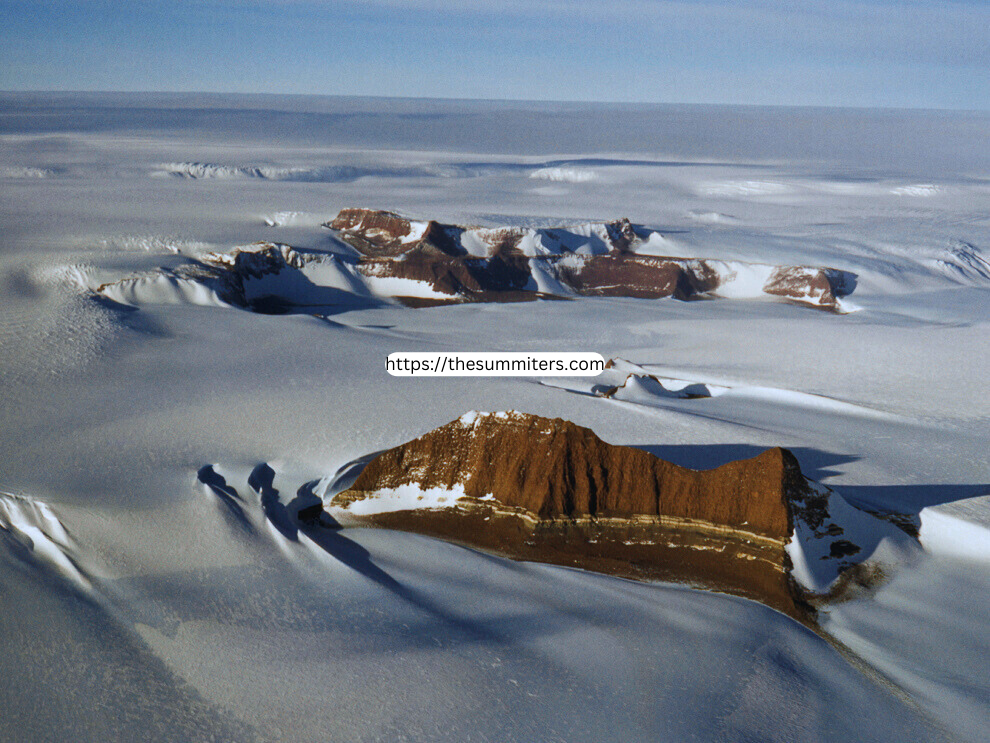
The South Pole is a area of extraordinary adventure and scientific discoveries located deep within the heart of Antarctica. As the southernmost point on our planet it summarizes untouched wilderness and extreme conditions. positioned at an elevation of approximately 2,835 meters (9,301 feet) above sea level the South Pole calls out to intrepid explorers and scientists, offering a unique and demanding experience that goes far beyond the realm of ordinary human achievements.
Trekking and Routes
Setting out on a South Pole expedition is an extraordinary undertaking, typically undertaken by teams equipped with skis. Unlike traditional mountain climbs, there are no well-worn paths, but expeditions typically follow a few general routes:
- The Hercules Inlet Route:
This is one of the most frequently chosen routes, commencing from the Hercules Inlet on the Antarctic coast. It involves the crossing huge length of the Antarctic plateau to reach the South Pole.
- The Messner Start Route:
Named after the renowned mountaineer Reinhold Messner, this route begins at the base of the Leverett Glacier. It is known for its challenging crevasse fields and technical terrain.
- Other Routes:
Although less common, there are variations and alternative starting points for expeditions, each presenting its own unique set of challenges and experiences.
Challenges and Difficulties
The journey to the South Pole is an expedition marked by unparalleled challenges:
- Extreme Cold:
Antarctica is one of the coldest places on Earth with temperatures often downfall below -40°C (-40°F). Surviving in such harsh conditions demands specialized gear and unwavering determination.
- Isolation:
The South Pole ranks among the most remote locations on the planet. Expedition members must confront the psychological trials of isolation and confinement.
- Logistics:
Organizing an expedition to the South Pole entails meticulous planning, including obtaining permits, arranging transportation to Antarctica, coordinating with support teams, and navigating the capricious Antarctic weather.
- Physical and Mental Stamina:
Covering extensive distances on skis while pulling heavy sleds is physically demanding. Mental fortitude is equally essential to endure the monotony and isolation.
Cost to Summit
Reaching the South Pole carries substantial financial considerations:
- Permits and Expedition Fees:
Obtaining permits and securing expedition support can be expensive, with costs varying depending on the type of expedition and required services.
- Travel Expenses:
This encompasses international flights to and from Antarctica, accommodations in gateway cities, and transportation to the expedition’s starting point.
- Equipment:
Expedition members require specialized cold-weather gear, including top-quality clothing, ski equipment, camping gear, and navigational tools.
- Guides and Support Staff:
Many expeditions enlist the expertise of experienced guides and support staff to enhance safety and comfort, which adds to the overall cost.
Average Cost
As an average a South Pole journey can range from $40000 to $80000 or more per person. The accurate cost depends on factors such as the selected route, the level of logistic support required, the duration of the expedition and whether it’s a guided or independent journey. Diligent financial planning and comprehensive preparation are essential for a successful and secure venture to this remote and frigid destination.
Reaching the South Pole is an achievement that surpasses the boundaries of typical human experience offering explorers the chance to explore one of the most mint and isolated regions on Earth. Despite the significant financial investment and logistical difficulties involved, the rewards include a profound sense of accomplishment and the privilege of standing at the very bottom of the world.
9- Toubkal: Conquering North Africa’s Highest Summit
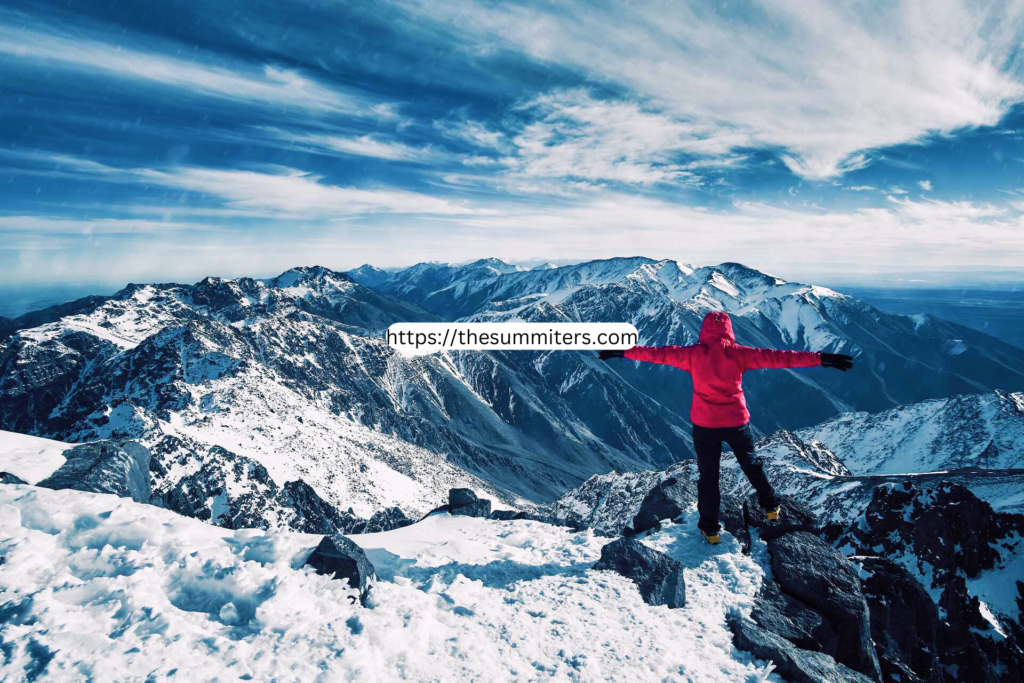
Toubkal, nestled in Morocco’s High Atlas Mountains, represents an emblem of adventure and natural splendor. As North Africa’s loftiest peak, it majestically reaches an elevation of 4,167 meters (13,671 feet) above sea level. Toubkal’s grand presence and enchanting scenery have enticed mountaineers and trekkers for generations. Ascending Toubkal is an outstanding accomplishment, requiring not only technical mastery but also an admiration for the rugged allure of this North African jewel.
Trekking & Routes
Exploring Toubkal offers a diverse and captivating experience, featuring several noteworthy routes
- Standard Route (South Route):
This is the most commonly traversed path, guiding climbers through the mountain’s southern slopes. It offers a direct route to the summit and is considered less technically demanding.
- North Cirque Route:
For those seeking a more demanding ascent, the North Cirque Route awaits. Climbers must navigate steep ridges and confront technical rock and ice sections, demanding advanced mountaineering skills.
- Akioud Route:
The Akioud Route presents an exhilarating ascent with exposed ridges and rock faces, making it a favored choice for experienced climbers.
Challenges and Difficulties
Climbing Toubkal is a formidable undertaking, replete with distinctive challenges:
- Altitude Concerns:
While not among the world’s loftiest peaks, Toubkal’s altitude can still pose risks. Adequate acclimatization is imperative to mitigate altitude sickness and fatigue.
- Variable Weather:
The mountain’s weather can be unpredictable, with conditions oscillating rapidly from blazing sun to freezing cold. Climbers must prepare for these meteorological fluctuations.
- Logistical Complexities:
Organizing an expedition to Toubkal entails securing permits, arranging transportation to the region, coordinating with local support teams, and respecting the cultural nuances of the area.
- Physical Endurance:
Ascending high altitudes demands physical robustness and stamina. Extended hours of trekking and steep ascents are integral to the challenge.
Cost to Summit
Attaining the Toubkal summit entails various financial considerations:
- Permit Fees:
Climbers must procure permits, with costs contingent on factors such as the chosen route and the expedition’s size.
- Travel Expenses:
This encompasses outlays like transportation to Morocco, accommodations, and any supplementary logistical arrangements.
- Equipment:
Climbers need to invest in specialized gear, including mountaineering equipment, suitable attire for high altitudes, and camping gear.
- Guides and Support Staff:
Many climbers opt for guided expeditions, which provide experienced guides, cooks, and support staff. While this enhances safety and comfort, it augments the overall cost.
Average Cost
On average, a Toubkal expedition can range from $500 to $2,000 or more per person. The precise cost hinges on factors like the selected route, the extent of logistical support required, the duration of the expedition, and whether it involves a guided or independent ascent. Prudent financial planning and thorough preparation are imperative for a triumphant and secure conquest of this iconic North African summit.
Scaling Toubkal is an accomplishment of cultural and natural eminence, affording climbers a distinctive fusion of technical trials and the opportunity to immerse themselves in the resplendent mountain landscapes of Morocco. Despite the financial investment and logistical intricacies, the rewards encompass a profound sense of achievement and the privilege of beholding the breathtaking beauty of Toubkal and the Atlas Mountains.
10- Mount Fuji: Conquering Japan’s Iconic Volcano
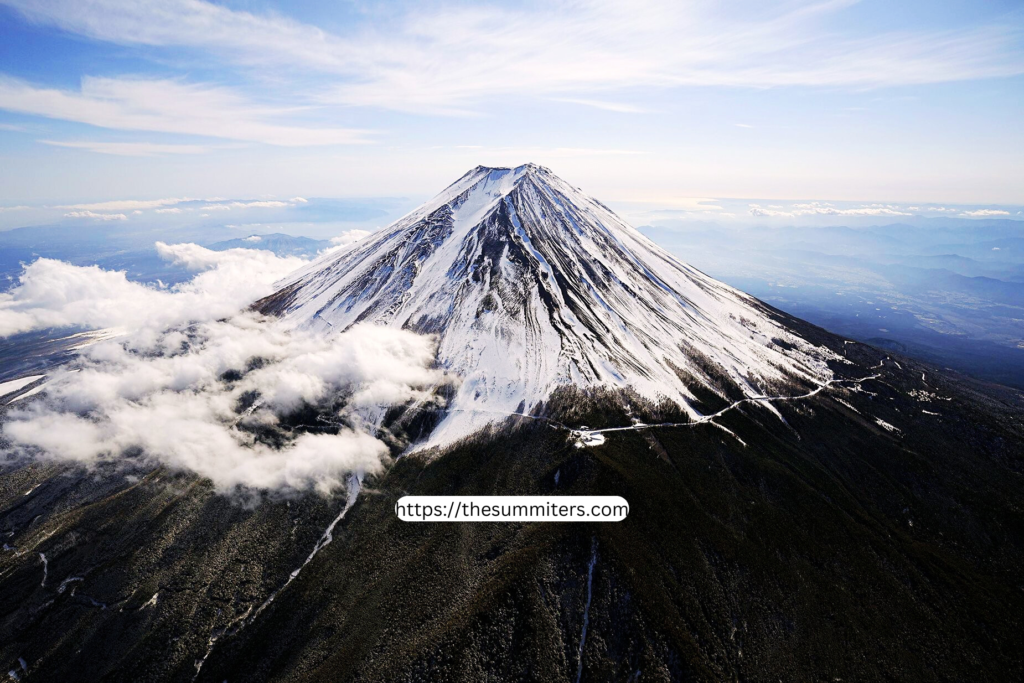
Mount Fuji Located at Japan’s Honshu Island, integrates the natural beauty and cultural heritage of Japan. As Japan’s highest peak it majestically towers to an elevation of 3,776 meters (12,389 feet) above sea level. Mount Fuji’s iconic silhouette and historical significance have transformed it into a must-visit destination for adventurers and tourists alike. Ascending Mount Fuji is an extraordinary feat, demanding not just physical stamina but also a deep appreciation for the cultural and natural importance of this volcanic marvel.
Trekking & Routes
Trekking Mount Fuji offers a diverse and captivating experience with several noteworthy routes:
- Yoshida Trail (Yoshida-guchi Route):
This is the most popular and commonly taken route, commencing from the fifth station on the mountain. It provides a relatively straightforward ascent and is equipped with huts and facilities for climbers.
- Subashiri Trail (Subashiri-guchi Route):
Beginning from the Subashiri fifth station, this route presents a less crowded alternative to the Yoshida Trail. It features enchanting forested sections and a gradual ascent.
- Fujinomiya Trail (Fujinomiya-guchi Route):
This route starts from the Fujinomiya fifth station and is renowned for its steep ascent. It is the shortest path to the summit and offers awe-inspiring vistas of the surrounding landscapes.
Challenges and Difficulties
Climbing Mount Fuji is a challenging endeavor, marked by its unique difficulties:
- Altitude Concerns:
Though not exceptionally high compared to some peaks, climbers can still experience altitude-related issues. Adequate acclimatization is vital to prevent symptoms like headaches, nausea, and fatigue.
- Variable Weather:
Mount Fuji’s weather is known for its unpredictability, ranging from clear skies to sudden storms. Climbers must be prepared for temperature fluctuations and possible adverse weather conditions.
- Physical Endurance:
Ascending Mount Fuji entails extended hours of trekking, steep ascents, and navigating rocky terrain. Physical fitness is vital for a successful climb.
- Logistical Considerations:
Organizing a Mount Fuji trek involves securing permits, arranging transportation to the fifth station, and considering accommodations at mountain huts or campsites.
Cost to Summit
Summiting Mount Fuji entails various financial aspects:
- Permit Fees:
Climbers are required to pay permit fees, which can vary based on factors like the climbing season and the chosen route.
- Travel Expenses:
This includes costs for transportation to and from the mountain, accommodations in nearby towns or cities, and any additional logistical arrangements.
- Equipment:
Climbers should invest in appropriate gear for mountain climbing, including cold-weather clothing, sturdy hiking boots, and headlamps for night climbs.
- Lodging:
Many climbers opt to stay in mountain huts during their ascent. Accommodation costs can fluctuate depending on the hut’s location and amenities.
Average Cost
On average, a Mount Fuji climb can range from $100 to $400 or more per person. The precise cost hinges on factors such as the selected route, the level of accommodation, the duration of the climb, and any additional services or equipment required. Thoughtful financial planning and comprehensive preparation are vital for a successful and secure ascent of this iconic Japanese peak.
Scaling Mount Fuji is an accomplishment of cultural and natural significance, offering climbers a unique blend of challenges and the opportunity to immerse themselves in Japan’s rich traditions and stunning landscapes. Despite the financial investment and logistical complexities involved, the rewards include a profound sense of achievement and the privilege of witnessing the unparalleled beauty of Mount Fuji and its surroundings.